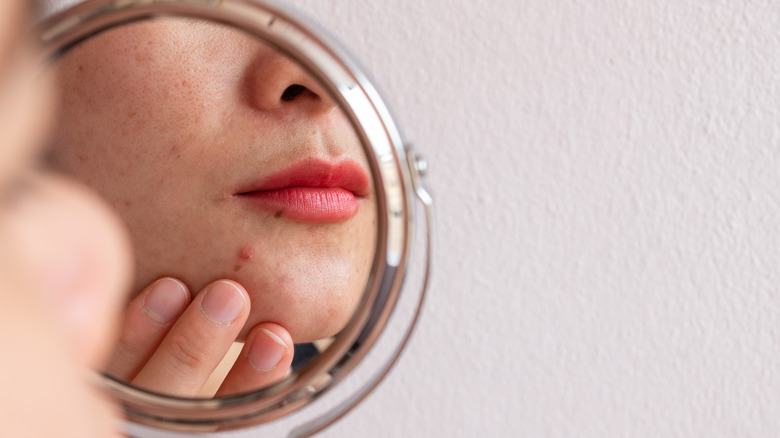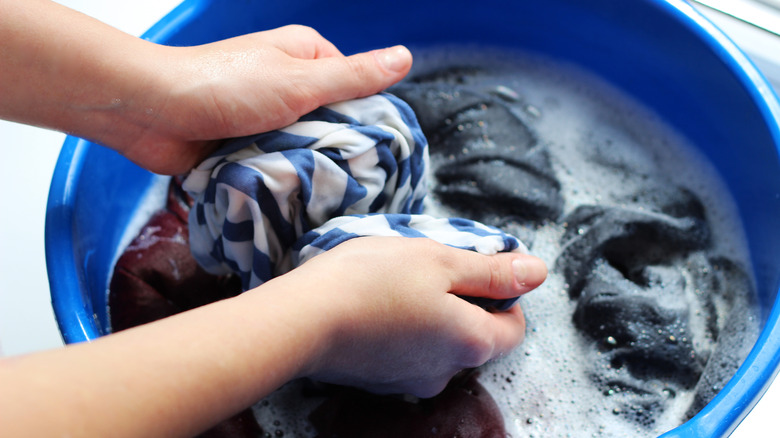What Really Happens If You Never Wash Your Winter Scarves
Most of us are pretty good about regularly washing anything that touches our face; pillow cases, bath towels, wash cloths, and makeup brushes are generally all washed pretty frequently. But in the winter, it's possible we are allowing certain things to have prolonged contact with our faces nearly every single day without ever washing them: our winter scarves.
Some are handwoven and delicate, some are made of wool and cannot tolerate standard machine washing and drying, some are made by big name designers and we are wary of ruining them by getting them wet. It makes sense why this particular staple of winter outerwear might not get the same regular washing as many other clothing items. But if you are wearing your winter scarf day in and day out without cleaning it, you could be experiencing some undesired effects that you haven't realized might be connected to the colorful, warm piece of fabric around your neck.
The surprising effects of wearing a dirty scarf
Because your scarf directly touches the skin of your neck and often your face, you are naturally shedding dead skin cells onto the fabric. And while that might not be visible, Shannon Lush, author of Spotless A-Z, points out that unless you are laundering your scarf, "you're shedding dead skin on it all the time, and that's rotting protein. So it has to be removed, otherwise it breeds infection" (via Bustle). If the words "rotting protein" make you cringe, you're in good company, and for good reason.
Placing that scarf back onto the skin of your face can cause breakouts. Pamela Marshall, co-founder of skincare brand Mortar & Milk, explained to Byrdie that many of her clients notice an increase in acne along their jawlines and neck during the winter, but often don't make the connection that their unwashed scarves are likely the culprits. Plus, according to experts, wearing dirty scarves near your face can increase your chance of illness, as bacteria and other microorganisms could be hiding in the soft folds of the otherwise-lovely fabric, and you could literally be breathing them right in (via ABC News). Yikes!.
How to clean your scarves
The best method of cleaning your scarves will depend on the material they are made out of. Don't just toss your scarf into the washing machine without checking the label! If your scarf is made out of wool or viscose, you're going to need to hand wash it to prevent shrinking, stretching, or other damage (via FabFitFun). You can do this in a sink or bath tub, whichever is more comfortable and fits the scarf best. Use cold water and gentle detergent to gently knead the scarf until suds appear. Once you've thoroughly massaged all parts of the scarf, let it soak for ten to fifteen minutes and then rinse it with cold water and lay it flat to dry. Don't hang it from a hanger or clothesline, as that may cause it to stretch.
If you have a cashmere scarf, you'll once again want to hand wash it in cool water using a tub, sink, or basin (via Good Housekeeping). Gently massage with your hands and then let it soak for thirty minutes. Rinse thoroughly until no trace of soap suds remain, and then gently press to remove excess water. Do not wring out the scarf; instead, keep gently pressing as many times as needed, and then lay it flat to dry.
If your scarf is silk, you will want to follow the same washing instructions for wool, but after it is dry, you can iron on low to remove wrinkles if needed.


